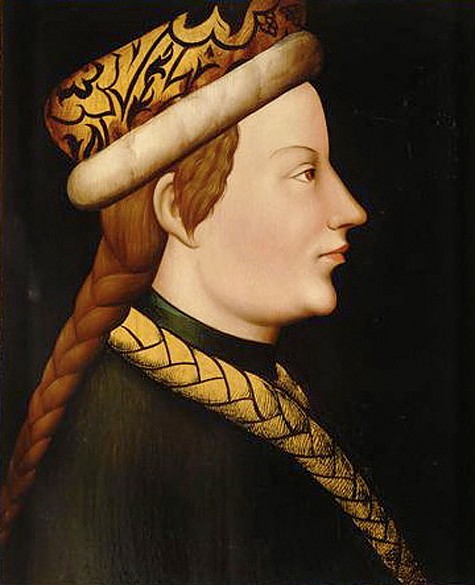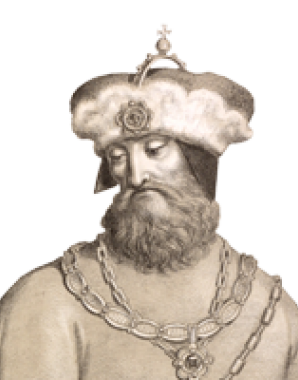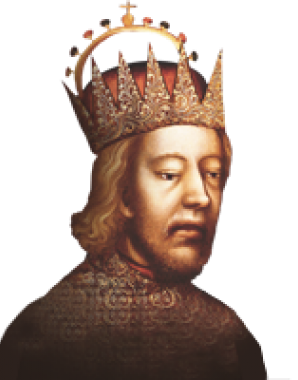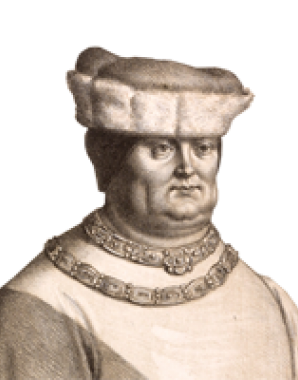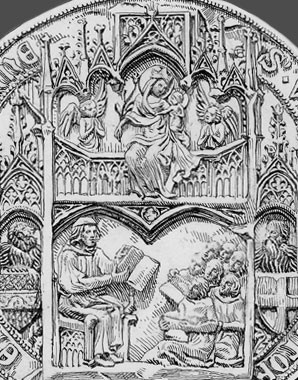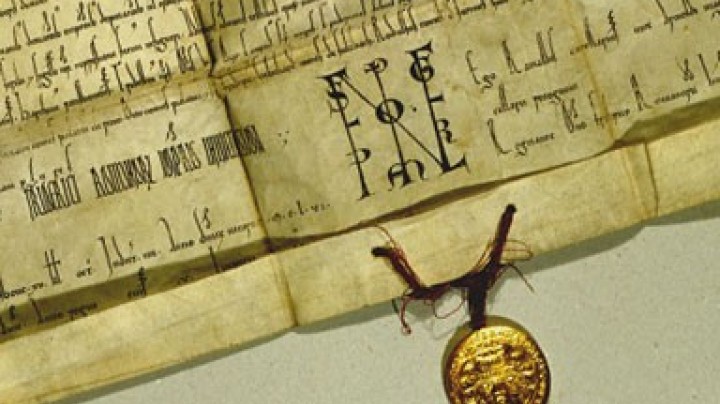Albrecht III and the nascent land of Austria
Despite the division of the dynastic line in 1379 and the weakening of power that this brought with it, Albrecht III gave Austria and the House of Habsburg new standing thanks to his cautious domestic and foreign policies and not least due to his extensive fostering of the arts.
The treaty concluded in 1379 in the Cistercian monastery of Neuberg an der Mürz between the brothers Albrecht III and Leopold III resulted in division of the Habsburg possessions while preserving mutual claims of inheritance.
According to its provisions Albrecht received the duchy of Austria (Upper and Lower Austria) including the Traungau and Salzkammergut.
For his part Leopold received the Forelands, that is, the ancestral possessions of the dynasty, together with Styria and the Pitten Mark (the area of Wiener Neustadt and Neunkirchen, that is, the south-eastern corner of present-day Lower Austria). Leopold’s dominions also included Carinthia (which at that time covered only present-day Lower Carinthia), Carniola and Tyrol as well as possessions in Istria – all regions where Habsburg rule was relatively new and as yet unconsolidated.
This division of lands was in marked contrast to the stipulations contained in the family agreement of 1364, which on the initiative of Duke Rudolf IV had decreed the indivisibility of the Habsburg lands. This was intended to prevent a looming split between the three sons of Albrecht II which would inevitably have weakened the dynasty as a whole.
This is in fact exactly what happened, and rivals of the Habsburgs such as the House of Luxembourg profited from this development. At that time Central Europe was dominated by the Luxembourg dynasty who had held the imperial title since 1346 as well as the crown of Bohemia since 1310/11.
The division of the dynastic line was de facto reversed when following the death of Leopold III in the Battle of Sempach in 1386 against an army of Swiss Confederates Albrecht assumed the guardianship of his brother’s sons, who were still minors. Albrecht was accorded the position of overall head of the dynasty for the rest of his life.
Albrecht’s greatest achievement as ruler was the systematic strengthening of the position of ruler at the expense of the nobility. The duke successfully brought the territories of a number of families that were immediate to the Empire, such as those of the counts of Hardegg or Schaunberg, and which bordered on Habsburg possessions, under his jurisdiction, thus de facto annexing them to the Austrian lands. The result was the creation of a tighter connection between the heterogeneous territories of the hereditary lands. For the first time something like a sense of Austrian identity arose, based on common rule by the House of Habsburg.
This is also the background to Albrecht’s numerous attempts to create closer ties between the nobility of his varied territories to his court by establishing a number of the knightly orders that were so popular during the late Middle Ages. However, none of the dynastic orders initiated by Albrecht were to outlive their founder. The most well known of these was the Order of the Plait or Lock, probably founded in honour of his wife Beatrice, which earned Albrecht the unusual epithet of ‘with the Plait’.
Albrecht’s rule was also of great significance for the cultural history of Austria. Of above-average education for his class and time, and the first major patron of the arts in the dynasty, he promoted the University of Vienna that had been founded by his brother Rudolf in 1365, summoning important representatives of late scholasticism to Vienna. Thanks to his pro-Roman policies in a time of papal schism, he secured the pope’s endorsement for a theological faculty, without which it could not be recognized as a fully-fledged university.
Albrecht contributed to the Habsburg sense of mission that later became so marked in the dynasty by initiating the writing of the Austrian Chronicle of the 95 Seigneurs, a pseudo-historical work that for the first time provided a kind of conspectus of the history of Austria from a heavily pro-Habsburg viewpoint.
Having consolidated his position, he was now able to reinforce the standing of the House of Habsburg in respect of his neighbours. Albrecht now exploited the weakness of the Luxembourg dynasty following the death of Emperor Charles IV (1378), the dominating figure on the imperial throne in the fourteenth century. The ill-starred rule of his son and successor in Bohemia and the Empire, Wenceslas IV (1361–1419) plunged the House of Luxembourg into a deep crisis.
The restored standing of the dynasty that allowed Albrecht to position himself as a possible candidate for the imperial crown suffered a devastating blow when he died suddenly in 1395 at the age of just forty-seven. The duke died at Schloss Laxenburg, his favourite seat, which he had remodelled and which was to become an important locus of Habsburg history.
Duke Albrecht III was interred in St Stephen’s Cathedral in Vienna, whose late Gothic extension begun by his brother Rudolf IV he had continued.
